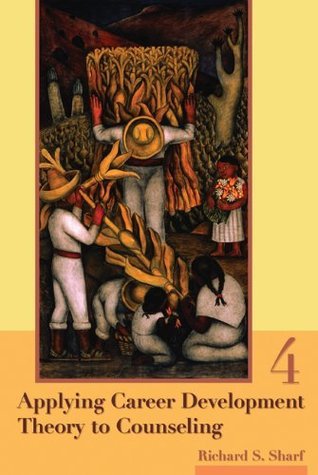What do you think?
Rate this book


468 pages, Hardcover
First published August 9, 2004
Broken down into four parts, trait and type theories, life-span theory, special focus theories, and theoretical integration, this book is designed to provide an overview of the various theories prevalent in career counseling. After a short introduction to the use of theory from a career development perspective and an outline of goals, ethics and career development considerations for diverse populations, the first part mostly addresses (1) trait and factor theory; (2) information and theory on occupations; (3) work adjustment theory; (4) Holland’s theory of types; and (5) Myers-Briggs type theory.
In the second part, the intriguing world of life-span theory is overviewed utilizing heavily the models of Super (1990), Gottfredson (1981, 2002, 2005), and Hopson and Adams (1977). Each stage, from childhood through adult career development, examines how individuals deal with work issues and career choices. Special consideration is given to topics such as sexual harassment, retirement, and unexpected job loss. Additionally, both the career development in childhood and in adolescence, have been modified by including information about Howard and Walsh’s (2010, 2011) fantasy substage (childhood) and their substages of internal processes and interaction (adolescence).
The third part explains the specific issues relevant to career theory, such as the role of parent and other in career decision making. Covering the special focus theories, these represent a different way of approaching career counseling. From the constructivist approaches of narrative and career construction, through the cognitive information-processing theories, each of the special focus theories provides an intriguing contrast to the traditional approaches reviewed earlier in the text. Of interest, are Blustein’s (2011) relational theory of working and Krumboltz’s (2009) Happenstance Learning Theory. Moreover, the cognitive and behavioral approaches to career development also provide useful views on career counseling.
In the last chapter of the book, the relevance of job placement, non-counseling interventions, group counseling, and other concerns, are discussed as they pertain to career counseling. Moreover, each theory of career counseling is assessed according to its strengths and weaknesses, making it useful to quickly assess a variety of career intervention methods. Lastly, all the theories presented in the text are given an adequate discussion about their relevance and implications for a wide variety of diverse populations.
Overall, the text accomplishes a tremendous task of providing the reader with years of theory and research consolidated into a useable format for quick reference. I would highly recommend this text as a source to provide an overview of the career counseling process and as a reference for researching different styles, the curious reader may be intuitively drawn towards.
References:
Blustein, D.L. (2011). A relational theory of working. Journal of Vocational Behavior, 79(1), 1-17.
Gottfredson, L.S. (1981). Circumscription and compromise: A developmental theory of occupational aspirations. Journal of Counseling Psychology, 28, 545-579.
Gottfredson, L.S. (2002). Gottfredson’s theory of circumscription, compromise, and self-creation. In D. Brown & Associates (Eds.), Career choice and development (4TH ed., pp. 85-148). San Francisco, CA: Jossey-Bass.
Gottfredson, L.S. (2005). Applying Gottfredson’s theory of circumscription and compromise in career guidance and counseling. In S.D. Brown & R.W. Lent (Eds.), Career development and counseling: Putting theory and research to work. (pp. 71-100). Hoboken, NJ: Wiley.
Hopson, B., & Adams, J.D. (1977). Towards an understanding of transitions: Defining some boundaries of transition. In J. Adams, J. Hayes, & B. Hopson (Eds.), Transition: Understanding and managing personal change (pp. 1-19). Montclair, NJ: Allenheld & Osmun.
Howard, K. A. S., & Walsh, M.E. (2010). Conceptions of career choice and attainment: Developmental levels in how children think about careers. Journal of Vocational Behavior, 76(2), 143-152.
Howard, K. A. S., & Walks, M.E. (2011). Children’s conception of career choice and attainment: Model development. Journal of career development, 38(3), 256-271.
Krumbolz, J.D. (2009). The happenstance learning theory. Journal of Career Assessment, 17(2), 135-154.
Super, D.E. (1990). A life-span, life-space approach to career development. In D. Brown, L. Brooks, & Associates (Eds.), Career choice and development: Applying contemporary theories to practice (2nd ed., pp. 196-261). San Francisco, CA: Jossey-Bass.
Happy Reading!